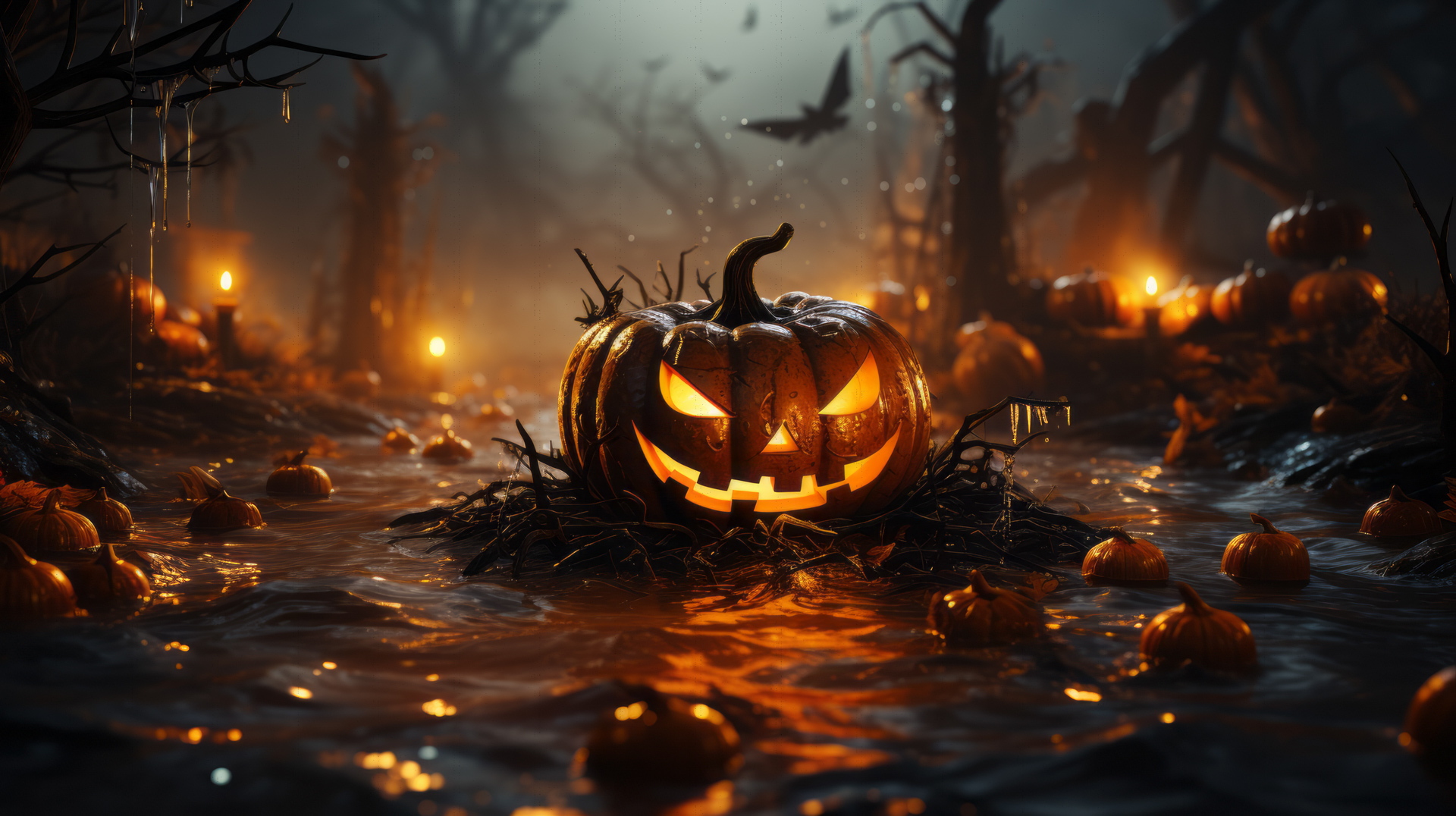As the mists descend, cloaking familiar walks and pathways, the ancient oak doors of late autumn slowly creak open to let loose the spirits of Halloween. How about taking a moment to think about a few of the tales and myths that surround this annual celebration of all things otherworldly?
This is the time of the year when the air has noticeably taken on a fresh crispness (especially here in the northern hemisphere) and newly fallen leaves crunch underfoot, a portend to the longer nights and darker days to come. It’s also a time when young goblins, witches and monsters roam the foggy streets in search of sweets and treats.
 Download a free copy of "The Ghastly Quiz Book" using this link
Download a free copy of "The Ghastly Quiz Book" using this link
Beyond the veils of cobwebs and the flickering of jack-o’-lanterns, how much do we really know about this festival? Why do we don those costumes, and who decided that bobbing for apples was a perfectly rational way to celebrate? In the spirit of the season, let’s take a peek beyond the mystery of this enigmatic celebration.
Halloween’s roots are most often attributed to the Celts, the Iron Age communities that populated Europe over 2,000 years ago. Their festival of Samhain, pronounced "sow-in," marked the end of the harvest season and heralded the onset of winter. Celts believed that on the eve of November 1, the thin curtain that separates the living and the dead dissolves, and spirits roam freely.
During Samhain, Druids (Celtic priests) would light bonfires and people would wear animal skins to ward off phantoms. As the Romans infiltrated Celtic territories, they added their own festivals into the mix. One such was Feralia, a late-October day to honour the dead. Also the Roman day to honour Pomona, the goddess of fruit trees (hello, apple bobbing), and voilà — you've got a heady mix of traditions brewing.
 Download a free copy of "The Ghastly Quiz Book" using this link
Download a free copy of "The Ghastly Quiz Book" using this link
Now to Medieval Europe. Surprise, surprise, the Christian Church wasn’t too keen on these pagan festivals. In a move to rebrand the religious message, Pope Gregory III in the 8th century designated November-the-first as All Saints' Day, or All Hallows. The night before, known as All Hallows' Eve and later Halloween, became a sanctified occasion. But old habits die hard, so the fusion of pagan and Christian traditions collided, creating the rich tapestry of lore and ritual we know today.
Halloween isn't just a Western phenomenon. Around the world, cultures celebrate similar festivals where the divide between this life and the next thins. Mexico's Día de los Muertos, or Day of the Dead, blends indigenous beliefs with Catholicism in a vibrant celebration that involves altars, marigold flowers, and sugar skulls. In China, the Hungry Ghost Festival serves as a time to pay homage to restless spirits by offering food and burning paper effigies of money and other worldly goods.
Skipping across the pond to America, where Halloween found fertile ground among Irish and Scottish immigrants. The practice of "guising," where kids would go door-to-door in costumes to sing or recite poetry in exchange for food, morphed into modern trick-or-treating. The trick? Well, if you didn’t treat, you could expect some playful vandalism — think egging houses.
And the candy corn? Oh, that divisive kernel of sugary delight made its debut in the late 19th century, thanks to George Renninger, an employee at the Wunderle Candy Company. Marketed initially as "Chicken Feed," in the US and also known as “Brach’s Classic Candy Corn” it's now as synonymous with Halloween as the full moon is with werewolves.
 Download a free copy of "The Ghastly Quiz Book" using this link
Download a free copy of "The Ghastly Quiz Book" using this link
In the 21st century, Halloween has morphed into a commercial juggernaut. Cosplay fanatics spend months crafting the perfect costume, while ‘haunted houses’ elevate the scare game to Hollywood levels.
So, as you dig into that candy stash or carve another face into a pumpkin, think about the labyrinthine journey of Halloween - from pagan ritual to global phenomenon. A festival of contradictions, Halloween remains a captivating enigma, defying easy explanation, much like the spirits it venerates. It stands at the intersection of life and death, of past and present, and of fear and fun.
As dusk settles this October 31st, and as kids and adults alike don their finest ghostly attire, remember: this is great fun, but the traditions you partake in are echoes of a bygone era, each with its own tale, as mysterious and enchanting as the festival itself.
To add a bit of fun to the celebration, here’s a (FREE) 100-question quiz book ‘The Ghastly Quiz Book - Ghouls, Ghosts, Monsters’ you can test your mythical knowledge, print out the whole thing (or individual sections) and distribute to friends and family to see how much they know about the subject. The perfect addition to this year’s Halloween Party.
Please, be my guest and download a free copy of "The Ghastly Quiz Book" using this link
